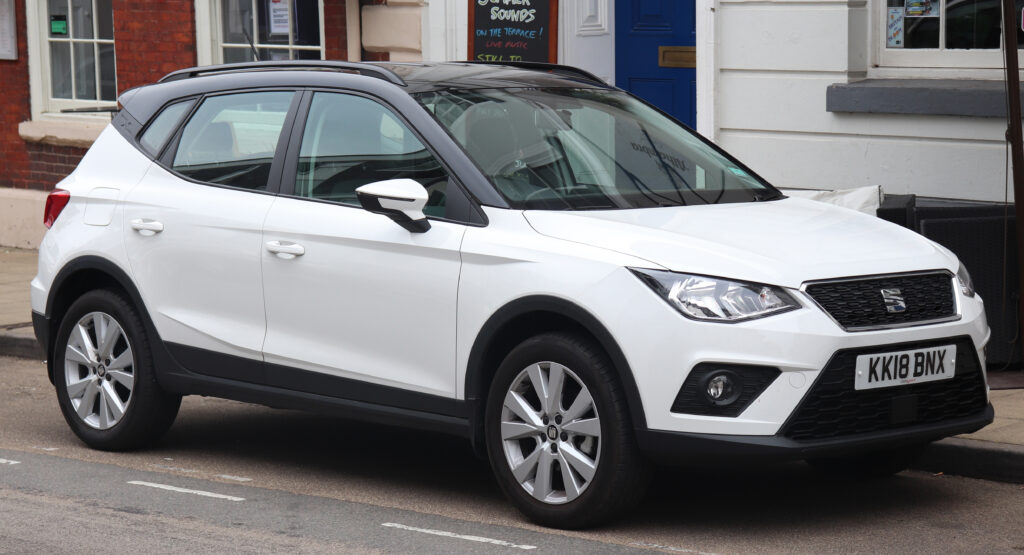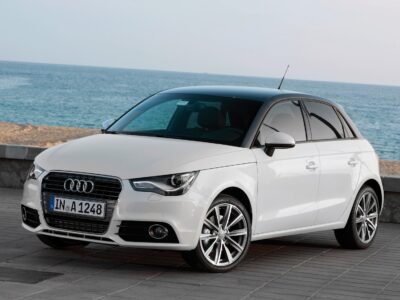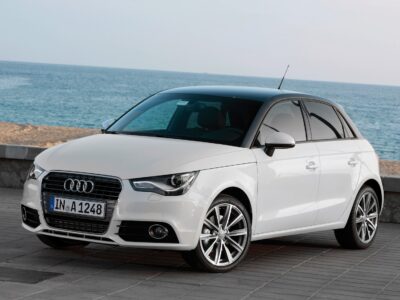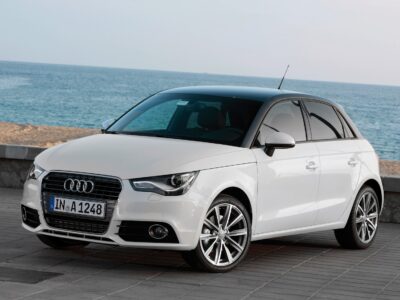
Seat Arona Engine Problems: The Complete 2025 Owner’s Guide

- Understanding Why Seat Arona Engine Issues Matter
- Overview of Seat Arona Engines
- The Most Common Seat Arona Engine Problems
- 1. 1.0 TSI Timing Chain & Belt-Related Problems
- 2. 1.5 TSI EVO “Kangarooing” or Jerky Acceleration
- 3. Excessive Oil Consumption (1.0 & 1.5 TSI)
- 4. Turbocharger Issues (Especially 1.0 TSI)
- 5. Misfires Under Light Throttle (1.0 TSI)
- 6. Fuel Injector Problems (TSI Engines)
- 7. 1.6 TDI EGR Problems
- 8. DPF Regeneration Issues (Diesel Models)
- 9. Coolant Leaks (1.0 TSI & 1.5 TSI)
- 10. Idle Fluctuations (TSI Engines)
- 11. Start/Stop System Causing Rough Restarts
- 12. Crankcase Ventilation (PCV) Failures
- 13. Engine Mount Deterioration (1.0 & 1.5 TSI)
- 14. Weak Fuel Pumps on Early 1.0 TSI Models
- 15. Software Glitches Across TSI Engines
- Diagnostic Checklist for Seat Arona Engine Problems
- Maintenance to Prevent Arona Engine Issues
- When to Worry: Red Flags You Should Never Ignore
- Closing Thoughts
- FAQs
Understanding Why Seat Arona Engine Issues Matter
When we talk about the Seat Arona, we’re talking about one of the most popular compact SUVs in Europe—efficient, stylish, and surprisingly fun to drive. But like any modern Volkswagen-Group creation, the Arona inherits both brilliance and quirks from its shared engine lineup. And when engine issues surface, they can turn a dependable daily drive into a frustrating guessing game.
In this long-form guide, we dive deep into real-world Seat Arona engine problems, from the infamous 1.0 TSI timing chain tensioner worries to 1.5 EVO kangarooing, oil consumption, turbo faults, and misfire patterns. We also break down symptoms, causes, fixes, expected repair costs, and how to prevent problems before they escalate.
Overview of Seat Arona Engines
Before digging into the issues, we need a quick recap of the engines that power the Arona. Most problems cluster around specific versions, and understanding them helps us map the root causes clearly.
Petrol Engines
- 1.0 TSI (95 & 115 PS) – EA211
- 1.5 TSI EVO (150 PS) – EA211 ACT
- 1.6 MPI (rare in Western markets)
Diesel Engines
- 1.6 TDI
- 2.0 TDI (less common in Arona but present in select markets)
Hybrid or Alternate Power
- None for Arona as of 2025.
Each engine family carries its own unique failure profile, which we break down below.
The Most Common Seat Arona Engine Problems
Let’s walk through the most reported, most impactful, and most annoying issues Arona owners encounter.
The Arona’s 1.0 TSI EA211 uses a timing belt, not a chain—but confusion arises because older EA111 engines had chains. Even so, owners report a few belt-drive-related issues.
Symptoms
- Chirping noise on cold start
- Belt dust around the cover
- Rough idle
- “Start/Stop error” message
- Misfire-like vibrations
Causes
- Belt tension misalignment
- Early belt wear (some fail before 60k miles)
- Oil contamination from leaking cam seals
Fix
- Replace belt + tensioner
- Inspect camshaft seals
- Update to improved belt specification
Estimated Cost
£350–£450 (UK independent garage)
£550–£700 (Seat dealership)
Risk Level
Medium – Ignored belt wear can cause catastrophic engine failure.
2. 1.5 TSI EVO “Kangarooing” or Jerky Acceleration
The infamous VW-Group 1.5 TSI EVO kangarooing affects many models: Arona, Ateca, Leon, Golf, Karoq, and more.
What It Feels Like
Imagine pulling away gently and the car hops like a startled rabbit. You’re pressing smoothly, but the engine surges, cuts, grabs, then jolts forward again. It’s embarrassing in traffic, uncomfortable on a hill, and extremely unpleasant in cold weather.
Main Causes
- Software mapping inconsistencies
- Cylinder shutdown (ACT) transitions
- Poor torque calibration in lower RPM
- Cold-weather fuelling issues
Fix
- ECU software update
- Disabling ACT (where possible)
- Switching to premium fuel sometimes helps
- VW/Seat patches introduced after 2023 helped, but not perfectly
Cost
Often free under warranty.
Risk Level
Low – annoying, not dangerous.
3. Excessive Oil Consumption (1.0 & 1.5 TSI)
Although not as dramatic as older 1.8/2.0 TFSI engines, Arona petrol units sometimes drink oil faster than expected.
Warning Signs
- Oil level light between services
- Sooty exhaust tips
- Rough idle
- Blue smoke on cold start (rare)
Causes
- Piston ring wear
- Turbo oil seal seepage
- PCV system malfunction
- Aggressive driving in smaller turbo engines
Fix
- Replace PCV
- Investigate turbo seals
- Check compression
- Update ECU (if oil mapping causes dilution)
Cost
- PCV: £120–£200
- Turbo seals: £350–£700
- Engine rebuild (severe cases): £1,200–£2,200
Prevention
- More frequent oil changes than VW’s long-life schedule
- High-quality 5W30 or 0W20 oil depending on engine spec
4. Turbocharger Issues (Especially 1.0 TSI)
A small turbo working hard can occasionally throw a tantrum.
You may be interested in reading SEAT Arona Screen Not Working — The Complete Troubleshooting Guide
SEAT Arona Screen Not Working — The Complete Troubleshooting GuideSymptoms
- Whistling or dentist-drill sound
- Sudden lack of power
- Overboost or underboost errors
- EPC light
- Black smoke under acceleration
Main Causes
- Wastegate actuator failures
- Vacuum line leaks
- Shaft bearing wear
- Sticking VGT (diesel)
Fix
- Replace actuator or rod
- Recalibrate electronically
- Turbo refurb or replacement
Cost
- Actuator: £150–£250
- Turbo replacement: £700–£1,200 (petrol)
- Diesel VGT turbo: £900–£1,500
5. Misfires Under Light Throttle (1.0 TSI)
Misfires on the Arona can be subtle or aggressive depending on the cause.
Symptoms
- Hesitation
- Rough idle
- EPC light
- Poor cold-start behaviour
- Strong vibrations through pedals
Typical Causes
- Faulty ignition coils
- Carbon build-up on intake valves
- Low-pressure fuel pump weakness
- Software fuelling issues
Fix
- Replace coils
- Clean spark plugs
- Walnut blasting for valve carbon
- Fuel pump replacement if necessary
Cost
- Coils + plugs: £120–£200
- Walnut blast: £300–£500
- LPFP: £200–£350
6. Fuel Injector Problems (TSI Engines)
Modern direct-injection engines love efficiency… and occasionally love sticking injectors too.
Symptoms
- Rough running
- Hard starts
- Fuel smell
- Misfire codes P0300–P0304
- Poor MPG
Causes
- Injector carbon build-up
- Poor-quality fuel
- Stuck pintles
- ECU fuelling imbalance
Fix
- Injector cleaning
- Replacement
- Software recalibration
Cost
£180–£300 per injector
7. 1.6 TDI EGR Problems
Diesels bring their own flavour of trouble, especially around emissions systems.
Symptoms
- Check-engine light
- Limp mode
- Poor throttle response
- Smell of exhaust fumes
- Stalling at low RPM
Causes
- Carboned-up EGR valve
- Cracked EGR cooler
- Stuck EGR flap
- Faulty temp sensors
Fix
- EGR cleaning
- Replace valve
- ECU reset
Cost
£250–£550
8. DPF Regeneration Issues (Diesel Models)
Short journeys kill diesel DPFs—simple as that.
Symptoms
- Warning lights
- Higher idle
- Radiator fans running frequently
- Poor MPG
- Turbo lag
Causes
- Incomplete DPF regeneration
- Soot overload
- Failed temp sensors
- Stuck EGR causing poor combustion
Fix
- Forced regen
- Long motorway drive
- DPF cleaning
- Sensor replacement
Cost
- Forced regen: £100–£150
- Cleaning: £200–£350
- Replacement: £900–£1,300
9. Coolant Leaks (1.0 TSI & 1.5 TSI)
Coolant leaks often appear around the water pump housing or thermostat.
Symptoms
- Low coolant warning
- Sweet smell
- Pink residue under engine
- Engine overheating
- Cabin heater not warm
Causes
- Plastic thermostat cracking
- Water pump seal leak
- Hose wear
- Expansion tank cap failure
Fix
- New pump + thermostat
- Replace hoses
- Pressure-test system
Cost
£300–£450
10. Idle Fluctuations (TSI Engines)
If your Arona feels like it’s breathing heavily at idle, you’re not alone.
Symptoms
- Unstable RPM
- Engine shaking
- Unexpected stalling
- Poor cold-start behaviour
Causes
- Throttle body contamination
- PCV malfunction
- Weak fuel pump
- Software fuelling fault
Fix
- Clean throttle body
- Replace PCV
- Relearn idle via diagnostics
Cost
£150–£300
11. Start/Stop System Causing Rough Restarts
The start/stop feature on some Aronias restarts aggressively, almost like the engine hiccups.
Why It Happens
- Weak auxiliary battery
- Faulty starter-generator
- ECU delay
- Worn mounts amplifying vibration
Cost
£120–£500 depending on component
12. Crankcase Ventilation (PCV) Failures
A faulty PCV can cause a chain reaction of symptoms that mislead owners.
Symptoms
- High idle
- Whistling noise
- Excessive oil consumption
- Lean codes
- Vacuum leak
Fix
Replace PCV unit (£100–£200)
You may be interested in reading SEAT Arona Screen Not Working — The Complete Troubleshooting Guide
SEAT Arona Screen Not Working — The Complete Troubleshooting Guide Seat Arona Radio Not Working: The Complete Troubleshooting Guide
Seat Arona Radio Not Working: The Complete Troubleshooting Guide13. Engine Mount Deterioration (1.0 & 1.5 TSI)
This isn’t directly an engine “failure,” but bad mounts create the illusion of engine trouble.
Symptoms
- Vibrations
- Cabin rumble
- Clunky gear changes
- Harsh engine starts
Fix
Replace mounts: £150–£300 each
14. Weak Fuel Pumps on Early 1.0 TSI Models
Some early Arona units saw premature LPFP wear.
Symptoms
- Hesitation
- Long crank
- Reduced power
- EPC light
Fix
Pump replacement (£200–£350)
15. Software Glitches Across TSI Engines
With newer ECUs, software issues sometimes manifest as real-world engine behaviour problems.
Common complaints
- Poor cold-start throttle response
- Unpredictable idle
- Turbo lag spikes
- False warnings
Fix
- Dealer software update
- TPI fixes via Seat
Diagnostic Checklist for Seat Arona Engine Problems
Whenever the Arona begins to act strangely, follow this logical path.
Quick DIY Checks
- Is coolant low?
- Is oil level below min?
- Is air filter clogged?
- Does fuel cap seal properly?
- Any unusual noises?
Scan Tool Essentials
Look for codes:
- P0300 (misfire)
- P0420 (catalyst efficiency)
- P0299 (underboost)
- P0171 (lean fuel condition)
- P0401/P0402 (EGR issues)
Maintenance to Prevent Arona Engine Issues
Prevention is much cheaper than repair.
Key Tips
- Change oil every 7,500 miles, not VW’s 18,000-mile long-life intervals
- Use high-quality fuel
- Allow the turbo to warm up and cool down
- Perform regular intake cleaning
- Don’t skip belt inspections
When to Worry: Red Flags You Should Never Ignore
- Thick smoke
- Knocking noise
- Flashing EPC light
- Rapid coolant loss
- Sudden lack of power
- Overheating
Any of these require immediate inspection.
Closing Thoughts
The Seat Arona is generally reliable—but no car is perfect. Most engine issues come down to TSI quirks, software mapping, or diesel emissions complexity. The good news? Nearly all of the engine problems described here are fixable, often preventable, and rarely catastrophic if caught early.
Understanding symptoms, acting promptly, and keeping maintenance tight can help your Arona run smoothly for years.
FAQs
1. Are Seat Arona engines reliable overall?
Yes—overall reliability is solid, but 1.0 and 1.5 TSI engines have known quirks like misfires, belt wear, and kangarooing.
2. Does the Seat Arona suffer from timing chain problems?
No, most Arona engines use timing belts, not chains. Belt wear can occur early in some units.
3. What’s the most expensive engine failure?
Turbo replacement or severe oil-consumption-related engine rebuilds.
You may be interested in reading SEAT Arona Screen Not Working — The Complete Troubleshooting Guide
SEAT Arona Screen Not Working — The Complete Troubleshooting Guide Seat Arona Radio Not Working: The Complete Troubleshooting Guide
Seat Arona Radio Not Working: The Complete Troubleshooting Guide How to Fix Fiat 500 Clutch Problems: Symptoms and Solutions
How to Fix Fiat 500 Clutch Problems: Symptoms and Solutions4. Why does my Seat Arona jerk when accelerating?
Likely the 1.5 TSI EVO kangarooing issue, especially when cold.
5. Are diesel Arona engines better?
For long-distance use, yes. But they bring DPF and EGR problems if driven only on short trips.
If you want to know other articles similar to Seat Arona Engine Problems: The Complete 2025 Owner’s Guide you can visit the category Common Problems.
Deja una respuesta






More content of your interest